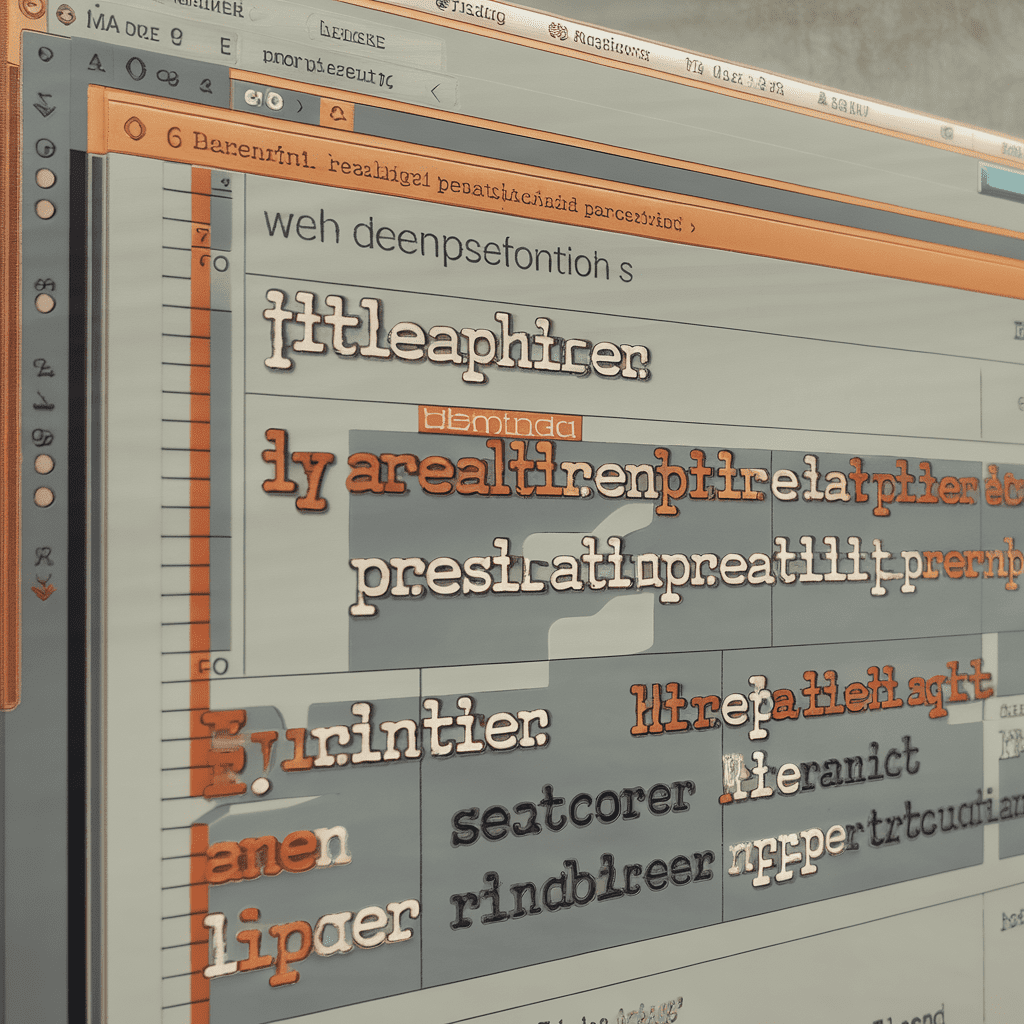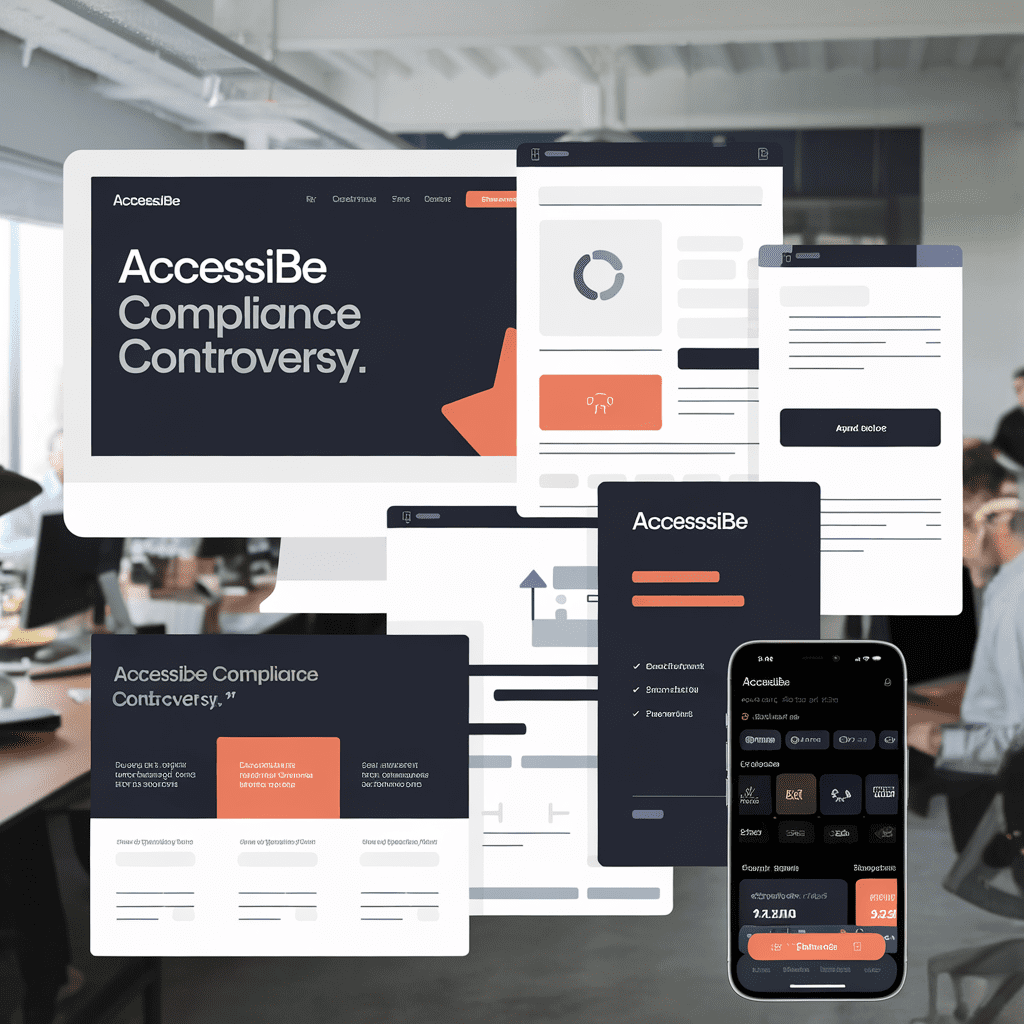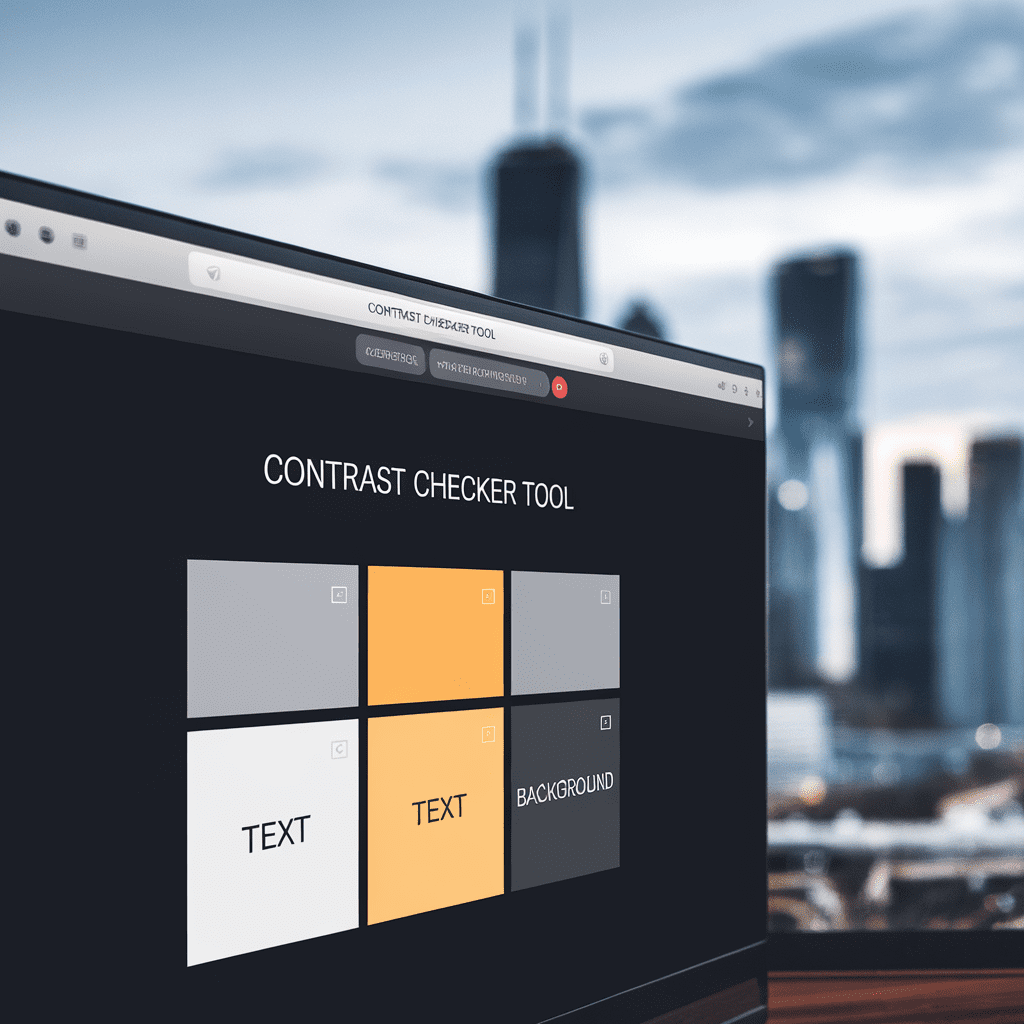
Hello friend, we're thrilled to see you here, navigating the thrilling odyssey of semantic HTML for accessibility. Pull up a chair, and let's dive in! If life were a pie, technology would be a key slice—with the tantalizing promise of new knowledge, much like that first bite of your favorite dessert.
Technology's evolution is steering us towards creating digital platforms seeped in inclusivity—making websites much more than a treasure chest of information, but also a beacon of hope and navigation for all. But instead of trying to decipher the constellations in this sprawling universe, wouldn't you prefer a trail of breadcrumbs leading straight to the elixir of tech-equality?
That's what “semantic HTML for accessibility” brings to the table; an inclusive web design technique that can rip down the wall between users and good content. The road to mastery isn’t always smooth—as butter on a hot griddle—but real growth comes from surmounting these challenges.
Our case study peels back the curtain on this very journey; charting the course from apprehensions encountered to game-changing strategies deployed; from tangible results secured to crucial lessons drawn out from the whirlwind of experience—all while weaving community building threads keen on knitting a universal fabric.
So, if you're curious about the twisty backstage secrets and towering highs reached with semantic HTML for accessibility too, you've hit the jackpot! Stick around and who knows, by the end you might just become an accessibility superhero yourself! Your tech-cape is silk-pressed and ready for your debut.
Background: Understanding the Importance of Semantic HTML for Accessibility
Settle in, friends, because we're about to embark on an exciting dive into the depths of "semantic HTML for accessibility." This ain't just another technical yawn-fest, no siree! It's a real-world journey through digital peaks and valleys, where code turns into access—smoothly, seamlessly. Ready? Then let's head out into this wild terrain.
For the people out there reveling in the joy of mouse clicks and effortless surfing, it's easy to forget the challenges others face when navigating the digital landscape. Color contrast impacts visibility. High-key animations might trigger seizures. And, without proper labels, screen readers can turn a simple contact form into the Bermuda Triangle—an unexpected obstacle tossed right in the face of someone who'd rather not get lost on their digital travels.
Defying these hurdles is our hero of this story—semantic HTML. No more dumping everything under the good ol' div tag. Structuring your site with semantic HTML tags—like header, footer, main and article—is like giving your website a mind-map. The payoff? Everyone gets to enjoy the journey, including our friends relying on assistive technologies (AT). The header isn't just a grey box to AT, it's the website's introduction set in fancy lights. And when a blind user tap-dances on their keyboard, voila—they're met with a clear layout, not confusion.
Want increased website traffic and confident visitors, engaging in your virtual community building? Semantic HTML for accessibility isn't a hard gamble—it's a smooth ride with a surefire ticket to one satisfied audience.
And before you shuffle on, take a moment to imagine this scenario. There's Jack—a colorblind photography delegate trawling your website for inspiration. Sans good color contrast ratio or clearly segregated content pieces, what should have been an inspiring meander becomes a frustrating slog instead. Already sounds like a rocky episodic drama? The next sections will explore—and solve—such accessibility and usability issues. Let's turn that rough ride into a smooth sail, shall we? After all, equality is where empathy meets action.
Challenges Faced in Implementing Semantic HTML for Accessibility
Navigating the accessibility labyrinth can feel like trying to pat your head and rub your belly while doing a handstand—it's quite gasping. Let's turn down the volume on the panic and meditation music, grab a cup of green tea laced with honey, and dive deep into the murky festoons of implementing semantic HTML for accessibility.
One common hurdle is misunderstanding simple aspects of semantic HTML, such as alt-text references in images. Consider this—you’re a document designer at a bustling technology firm launching an interactive website but forget to include comprehensive alt text for your images. Suddenly, users relying on screen readers wind up with a plate full of chaos—the readers can't interpret your images, leading to an inaccessible, disoriented user experience. It's like asking someone to enjoy a movie while blindfolded—not quite ideal, is it?
Have we also chatted about ARIA roles yet? They're the toast and butter of semantic HTML for accessibility! It's just that sometimes they're applied haphazardly, like jam on a hamburger (odd, right?). Imagine if we assigned a button role to a link—it can confuse both assistive tools and those who are dependent on them. Sure, ice cream and mustard both have their appeal but combining them might ruin a perfectly good afternoon snack! Similarly, misusing ARIA roles can turn things all topsy-turvy in the world of semantic HTML for accessibility.
Searching for the crème de la crème of usability nightmares? Look no further than improper contrast ratio! Sometimes, we're so absorbed in making our website look sexy that we forget how essential readability is. Grey text on a white background may seem aesthetically pleasing—but through the lens of accessibility, it poses a large barrier for visually impaired users. It’s akin to squinting at small-font cookbooks next to a dimly lit stove—a recipe for disaster!
Between here and there, we note that hurdles in effective web accessibility implementation don’t lie in the lack of direction, but in the awareness and correct application of guidelines. The truth is, crafting an accessible online space is like sewing a quilt— it takes time, patience, practice, and, of course, plenty of colorful threads! So, how about we pick up a needle and thread and transform our mish-mashed patchwork of understanding into a warm, cozy blanket of accessibility. What say you?
Strategies for Implementing Semantic HTML for Accessibility Successfully

Building on the insights shared earlier, who knew the worldwide web could play favorites? Yet, it somehow has – picking semantic HTML for its best buddy in the thriving technology playground. Let’s break it down, Sherlock-style: why is this computer language variant so loved, and how can we harness its power to conquer every accessibility challenge that comes our way?
Here's an example straight from the field. Picture a sprawling e-commerce site tracing over 10,000 products, but with navigational prompts and product descriptions as impossible maze-like riddles accessible only to seasoned tech-masters. Yes, indeed, a nightmare! Upon probing deeper, the horrifying truth revealed itself—the necessary metadata crucial for web accessibility was clearly on a very long vacation.
However, our heroic semantic HTML for accessibility popped-up like a knight in shining armor, deflecting every experiential dark cloud looming over the labyrinth. Semantically structured tags replaced unintelligible elements, making interactive controls accessible for those using screen readers or keyboard navigation. Solutions like aria-labels took center stage—reducing uncertainty while boosting user-friendliness.
And it didn’t stop at the immediate user either. Semantic HTML started attracting search bots like a magnet too. Thanks to this structure, each page on the site became equally understandable for human and bot users. So while users found smooth sailing navigating the ocean of merchandise, behind the scenes Google sent organic traffic raining in.
Just imagine—restructuring an entire website might seem like wrestling a Lernaean Hydra at first, but when your weapon of choice is semantic HTML for accessibility, victory is pretty much assured! Cuing in better usability scores, higher SEO rankings and a positively buzzing community.
The journey up until now has offered valuable insights about web accessibility and semantic HTML for sure! Moving forward in our journey with you champs, why not give aria-labelledby or role="" a whirl? Craft an enchanted forest of code that even a screen reader would love to explore. C’mon, ready to leap into the semantic symphony?Choices yours, making or breaking Accessibility Version 2.0.
Results of Implementing Semantic HTML for Accessibility
Holed up inside, we find ourselves looking with fresh, intrigued eyes at the online world…and suddenly it seems as if semantic HTML for accessibility isn't just a handy tip—it's an exciting adventure. Katya, a determined webbee (yes, we just created that word…because why not?), stumbled upon this exact revelation during her brave dive into enhancing website accessibility.
Remember those family puzzles that always went south because of the missing pieces? That was Katya's website before she decided to roll up her sleeves and embrace the power of semantic HTML for accessibility—a simple “piece” that replaced ornery div soup code, brought structure to content, and eliminated accessibility gray areas. Talk about building a strong, inclusive community!
Applying semantic HTML wasn't a stroll in the park; it was Katya scuffling with alt text at midnight, grappling with the vagueness of Aria labels, and engaging in thumb war with keyboard focus—her personal favorite Gaulish village! All humor aside, the quest wasn't easy, but boy oh boy, the fruits she reaped had never tasted sweeter.
After implementation, magnifying glasses zoomed their way to Katya's website; the visitor swarm began resembling a full-fledged Woodstock rock concert—increased traffic became regular jam. She noticed better search engine readability, attracting even wider audiences. More importantly, her paramount goal of making her website usable for everyone got checked off with a round of virtual standing applause!
Soaking up from her journey, one can't help but realize that implementing semantic HTML elevates not only webpage traffic but its inherent role in promoting inclusivity. We're not tossing about confetti yet—but step closer to righting web accessibility in our vast web universe. Strap on your seatbelts—it's time to ride this wave all the way to an insightful section 5! Buckle up!
Lessons Learned from the Case Study on Semantic HTML for Accessibility
Taking a journey down memory lane to our case study, we saw earlier that semantic HTML forms the cornerstone of accessibility in the web design universe. Without getting all techie on you, let's just say that buying into the idea and abiding by the 'semantic HTML for accessibility' mantra is like donning a superhero’s cape for those wrestling daily with accessibility or usability issues. Yeah, you heard it right – a technological superhero!
Think about the scrolling eye of a screen reader—always on the run for well-anchored alt texts, heartily relishing the neatly typed stacks of semantically organized content. Now, imagine this feast being shattered. Boom! Came along a non-semantic clutter of "div" and "span," leaving it starved and stunted. A sorry sight, isn't it?
Welcome back to reality—with a substantial spike in our website traffic! Remember how it all traced back to optimizing our semantic HTML for accessibility? All-nighters spent by coders paid off handsomely in streams of enthusiastic users appreciating our site’s thoughtful design, thanks to WAI (Web Accessibility Initiative) stress-free principles.
Our ace card was the accomplishment of semantic Miracle-Gro we used—ARIA Landmarks. Picture yourself journeying through a delightful park marked with clear signboards—quite a cake walk, right? ARIA landmarks were just those signposts for our users with disabilities.
Our chief takeaway is spicy—contrast ratio. Remember the times when you stared at the screen battling terrible glare, squinting at faint and faded text? We upped the contrast – problem solved. Trust us, one can never overemphasize the importance of Flesch-Kincaid Readability, whether designing online crossword puzzles or sleek app interfaces!
As Steve Jobs said, “Innovation distinguishes between a leader and a follower,” molding this guiding belief at heart, worth considering as we trudge along our web accessibility journey being a lifeline for the a11y community, using semantic HTML as our wand, creating an accessible, inclusive online world. In closing thought, why not push the envelope right away? You could be the next website warden vanquishing accessibility dragons. Buckle up and dive into this thrill of a ride!
The Impact of Semantic HTML for Accessibility on Community Building
Diving headfirst into the world of semantic HTML for accessibility, it's our challenge (which we gladly accept) to create communities that everyone can access. Like cooking a friendly community barbecue, we need to ensure all recipes are accessible. Imagine if one of your guests needed a meal without gluten – you’d be prepared with something tasty, wouldn't you? Similarly, semantic HTML for accessibility is our recipe for digital inclusivity.
Let's sprint through a case where a once bustling online tech forum began losing steam due to accessibility issues. Members struggled to navigate the site, and interactions dropped alarmingly. The board made two significant decisions – understanding and advocating for semantic HTML's influence on accessibility and dedicating resources towards this initiative.
Post the intervention, tangible improvements were crystal clear. Navigation was simplified dramatically—with headers, footers, and asides seamlessly directing users around pages. ARIA roles were baked right into the HTML structure, transforming the way those using screen readers engaged with content.
That said, semantic HTML did more than just fix accessibility messes. The forum saw surging participation rates, revived memberships and, ultimately, a stronger sense of community blooming amidst the tech chatter. Digital barbecues hosted variations, and lo and behold, no one was left out!
So, remember, when we enrich our websites with semantic HTML for accessibility – part of our tech world's secret sauce – we unlock opportunities for empowering digital communities to thrive wholesomely. Turns out, fostering community spirit in cyberspace ain't so different from your friendly neighborhood barbecue after all! Can you even begin to imagine what we could stir up together with this potent digital seasoning?
Conclusion
So there we have it mates, proofs beyond a doubt—it's been one wild and rewarding expedition in the bushes of the "semantic HTML for accessibility." This case study promised quite an escapade, but boy did it deliver.
By peeling back each layer, we've tamed the beast that is using semantic HTML to address accessibility hurdles. And yes, let's catch our breath—it wasn't always a picnic! The odd tumble here and there, and those missteps? Those were our stepping stones to boost website traffic while staying true to community building ideals.
But let's pat each other on the backs; we ventured into dense forests of challenges and emerged with wisdom. We now possess the tools to implementing semantic HTML for more accessible web designs successfully. No small feat, eh?
Each step we've taken has proven valuable. We've learned the ropes, fumbled but got back up, revamped our strategies like resilient adventurers, and gauged breathtaking results!
Not only did we become more fluent in WAI, WCAG, and ARIA, we now stop at nothing―contrasting ratios, alt texts, accessible PDFs… Have power drills, will drill!
Think about it: Does not this knowledge broaden our horizons? An accepting digital environment is akin to an enriching community. Dare we say this experience brings us closer and opens doors to perspectives we might not have gazed upon before!
Consider applying your newfound insights to other challenging terrain in your own landscape. Or why not scout for more trailblazing studies alike in this enticing tech niche? After all, every adventure sparks new insights that fuel our next quest.
Easy does it—shake off the dirt from the expedition boots and stand tall. You're equipped! Go forth; build bridges over those troubled waters. Loop the horizon with accessibility trails. And remember, your victory over semantic HTML for accessibility is more than just ticking off scores—it '#Ally' spells a win, win, win scenario for all!
FAQ:
What are some of the challenges in implementing semantic HTML for accessibility? Setting up semantic HTML for accessibility takes time and effort due to the lack of common standards across browsers, varying interpretations of WAI-ARIA specs, and potential compatibility issues with assistive technologies. Additionally, factors such as understanding the insightful use of various config tags, earlier unstructured HTML codes, and ensuring total control over the website's layout can be a tough task. How can these challenges be successfully overcome? The best approach entails understanding semantics through continuous learning and using resources like the HTML Living Standard and W3C schemas. Using automatic test tools to perform continual audits, applying automated UI tests, manual data vetting, and structuring content into sections are especially useful. Close collaboration across design, development, and QA teams is also a crucial component in ensuring success. What are some potent results of successful semantic HTML for accessibility implementation? Successful implementation makes websites more accessible to the broader public, including those with disabilities. Besides being SEO-friendly by providing better site readability for SERPs, it promotes an inclusive digital environment. It also enhances website structure and flow, leading to a lower bounce rate, enhanced user engagement, and reaps cost savings from a business operations angle. Could you elaborate on how semantic HTML for accessibility contributes to community-building? Sure! Semantic HTML allows businesses to reach the widest possible audience inclusively, cultivating a sense of acceptance and appreciation among those with disabilities. The practice fosters good citizenry and community spirit in digital environments by making online resources more equitably accessible. Companies offering sites that cater to all users soon cultivate customer loyalty that amplifies reputation immense power.


